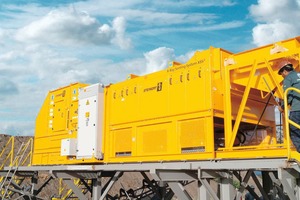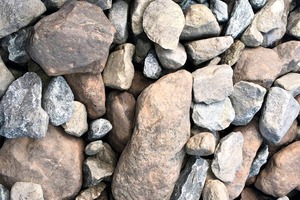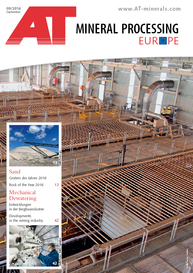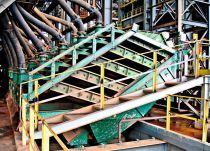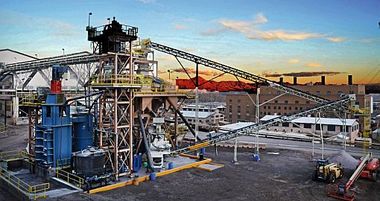Freeing up milling capacity in a SAG mill & ball mill circuit using sensor-based sorting
The throughput capacity and efficiency of a SAG mill are affected by the significant recirculated load derived from over-size discharge product (critical size “pebble” discharge) that is screened out and may be stockpiled or requires secondary crushing prior to re-introduction to the SAG mill feed. Where the SAG mill/ball mill circuit is the bottleneck in the processing plant the pebble circuit can be a significant factor in limiting overall plant capacity. The pebble circuit recirculating load can be very significant (depending on the ore characteristics and SAG mill operating dynamics). Typically it represents around 25 % of the feed to the SAG mill.
The harder component of the SAG mill feed from the primary crusher, that component with a higher bond work index, will be over represented in the pebble circuit (relative to the mill feed). In many cases the low grade or barren gangue component of the feed will have these characteristics of higher hardness and lower breakability relative to the mineralised component of the feed. In this case the pebble circuit will contain a significant component of sub-economic low-grade or barren gangue material. Ore sorting prior to secondary crushing of the pebble circuit material can potentially remove the bulk of this sub-economic material, thereby significantly reducing the feed to the secondary pebble crusher and the recirculating load to the SAG/Ball mill. This will also have the effect of increasing the overall grade of product from the SAG milling circuit.
Benefits of Reducing SAG Mill Pebble Recirculation by Ore Sorting
● De-bottleneck SAG/ball mill circuit
● Allows gold production expansion (or other metals in the case of base metals operations) to be achieved by increased mining output (and increased primary crushing rates) with no requirement for increased processing plant capacity – low capex expansion
● The expansion of mining and RoM feed to the plant is particularly beneficial when the SAG-ball mill circuit is the bottleneck constraining production expansion
● The increased head grades to ball mill and downstream circuit (through waste rejection) can lead to increased metallurgical recoveries in flotation or conventional mill/CIP gold circuits
● Alternatively, without increasing mining rate, a reduced cut-off grade can be applied to mining operations without compromising margins or profitability, thereby extending mining reserves and mine life

